Part Three of Four
I pulled into RUBY and I must have been a real sight because every one grabbed their cameras and rushed over to snap a picture. After mushing and camping out for the last 30 hours in ridiculously cold temperatures my frosty figure was rather unique. I had icicles encircling my face and my wolf ruff was solidly frozen around my headlight. RUBY was very welcoming. It is an Athabascan Indian village that sits on top of a hill overlooking the Yukon River. The several hundred folks who live there are excited when the Iditarod comes through, but they also continue their daily routines. So, as I parked my dog team down the road from the Community Center, snowmachines whizzed by. Most of the other teams were parked on the right side of the road, so we were by ourselves and nicely secluded to the left. I tended to the dogs and rubbed down their shoulders and backs. I thought that this might help keep their muscles loose. They ate well and got comfortable in the morning sunshine. There were several race spectators walking along the road, so I chatted with them and shared some trail stories. RUBY is the farthest northeast checkpoint and closest to Fairbanks and Two Rivers. I saw a few familiar faces who had flown in earlier that day. One young woman walked over to tell me that she had seen Allen at the checkpoint building and that he was looking great. I asked, “Which checkpoint?” She said, “Here.” I was a little shocked, so I asked her if she was positive that it was him – the only way that Allen would be ahead of me right now was if he had flown here! And that would have meant only one thing: something went terribly wrong. She said that she was pretty sure. So, I stopped what I was doing and rushed to the building several hundred yards up hill. I found the main RUBY Checker and asked him if Allen was here. “Nope.” Relief. My heart rate dropped back down to semi normal as I walked back to the team. Anything can happen out on the Iditarod, so crazy scenarios had been whipping through my mind. As I walked, I passed Jeff King’s team preparing to leave the checkpoint. He was far ahead of me now. We were a little over halfway through the 1000 mile route and he was already 7 hours ahead! I shook my head. His team looked perky as they trotted by my squad. Tatfish stood up to follow Jeff. Silly dog. Bullet and Nutmeg both looked curiously at the team, like “Why are you leaving so soon?”. The rest of my team was not interested. Teams continued to file out of the checkpoint. I spoke with Hans and Mitch Seavey and they both were having mid race doubts. These two teams had some of the most talented dogs and Mushers, for that matter. They looked strong. I think almost every Musher goes through this during the race. It was just another mental hurdle that we must all leap over at some time to be able to continue down the trail. I was planning to stay a full 8 hours in order to full fill my Yukon River Mandatory Rest period. So, I took my time to sort through my Food Drop bags carefully. I had sent a seat for my sled and it was wrapped in dog blankets. It is a very simple, lightweight aluminum contraption that I can attach to the rear of my runners. The legs had bent slightly in transport, so I grabbed my tool kit and worked until I could attach it with four small cotter pins. I rarely use the seat, but it was very useful last year in blizzard wind conditions. If weather like that came this year, I knew that I would appreciate having the seat to hunker down out of the wind. After sorting and fixing my gear I walked back to the checkpoint with some food and my sleeping bag. I was looking forward to a nice warm nap. The checkpoint was a busy place – Mushers, volunteers, reporters, spectators. I found an empty seat and sat to eat a warm meal. I also made myself drink several cups of water. My huge trail thermos is cumbersome and a hassle to carry around, but I had been draining it religiously since the race start. The only problem is that in these severe temperatures, I make myself drink a quart of liquid a lot quicker than I would normally – so that I am not left with a gatorade ice cube. Therefore, it had been several hours since I had a drink. I hung up my damp clothes and spread out my sleeping bag. Then I went to find a telephone. I had to call Kaz. When we are racing competitively on the Iditarod most Mushers don’t think about phoning home. We have so much on our minds already that intake of outside knowledge isn’t the best for our focus. But, it is nice to hear a family member and I needed to check on my Grandfather. The Race Officials let me use the checkpoint phone. It was a portable, so I went and sat in a corner. I phoned Kaz and found her on my second call. She told me right away that my Grandfather had died. My father had left Alaska just in time to see him. We spoke for only a few minutes because there wasn’t too much to say that wasn’t very sad. She was not going to make it to his funeral and I choose not to as well. I would mourn him on my own. I hung up and tried to give the phone back with out too much conversation. I would much rather have been out on the trail alone with my dog team than here in this busy checkpoint, but we all needed to rest. So, I curled up in my sleeping bag and pulled it over my head. I got up two hours later and walked out to the dogs. I needed to make some extended dog booties. Homey, Pud and Dingle, had small sores on the back of their front legs. These particular temperatures and snow conditions augmented the problem because the dogs would flick up loose snow with their toes and it would accumulate on the sores – forming mini ice balls. The ice balls really bothered the dogs. So, I took three pairs of wool socks (all my spares) and cut off the feet, leaving the long straight calf section. I slipped each dog’s foot down through the stocking and then tucked the bottom into a booty. The top of the sock went up above the dog’s elbow nearly to the shoulder. I then attached a string to each side and it went over the dogs back like suspenders. The poor fellahs looked a little silly, but it seemed to help. The shadows were growing longer as evening approached. The temperatures started to drop again. It would surely be a cold run on the river to GALENA.
THE YUKON RIVER
After bootying and jacketing everyone, we headed down the long steep hill onto the Yukon. It was 7 PM. It was absolutely gorgeous. The sun was setting over the frozen river and pinks and purples filled the sky line. The sun was an enormous ball of fire sitting over the horizon. As it set, a silhouette of my dog team trotted through this picture in front of me. Wow. There isn’t a time in my life when I am closer to God. So, I thought a lot about my Grandfather. The Yukon is amazing. If anyone ever has a chance to see the Yukon, take it. It is the artery that pumps through the center of Alaska. It is so powerful. It hides much of its true persona in the winter under the ice. There are times when I travel on the river that I can’t even recognize it as a body of flowing water. The ice is so thick in areas that people drive heavy vehicles over it. This year, for reasons unknown to me, things were a little different. And soon after leaving RUBY, I noticed a strange misty steam in the air in front of the team. Steam is caused by moisture evaporating into the cold air, but how was there moisture at 30 below zero? The only way there would be this much moisture released was if there was a section of non frozen river. I started to get a little nervous as the trail came closer and closer to the steam. I turned on my video camera because I didn’t really know what was going to happen. The dogs followed the trail as it curved to the left. It came with in 30 feet of the flowing river. I was astonished. It was literally gurgling out from under the ice sheet and flowing through the winter air before tucking back under a shelf. I have seen many sights over the last 10 years while traveling on the Yukon: northern lights, natural frozen ice sculptures, awesome wind storms, sun sets and sun rises, but this view of the raging dark blue cold water was incredible. It made me a little nervous and the dogs could tell, so we sped up and soon it was behind us. The image and sound of the flowing water however, stayed in my mind. The rest of the trail to GALENA was a combination of pensive anxiety and and deep thought. The dogs did their own thing and smoothly kept the pace west. I really believe that we can’t lie to our dogs – they generally know what’s going on. We don’t share all of our inner thoughts either but, dogs don’t think about the world as we do. They don’t ponder consequences or the future – they live in the “here and now”. That’s why they pick up on a Musher’s emotions and feelings. Those are raw energy instincts that a dog can understand. I think that the most successful Mushers are the ones who share their these feelings with their dogs. Take Lance, for instance. When he makes a dramatic push with his dog team, he has complete faith in his decision. His dogs sense no hesitation and no fear. In turn, they have no reason to be reluctant or uneasy. It’s amazing actually. The temperatures still hovered between 20 to 40 below. I could feel the ice balling up on my eyelashes as condensation from my breath rose over my neck gaiter and towards my eyes. I had worn my googles early in the race, but I didn’t feel like putting them back on. I would stick out my lower lip and blow warm air up to thaw the ice every once in a while. The rest of me was pretty warm. My Northern Outfitters gear makes me look like a 250 pound giant, but it sure keeps me warm. It is basically one thick sponge layer with a protective outer covering. Technology works! The team trotted on and it took us 5 and a half hours to get to where we could see the lights of GALENA. The dogs like to see the glow of a welcoming village and they really get jazzed up when we start to smell smoke from the many fuming wood stoves. We arrived at 1 AM. My stay at this checkpoint was relatively uneventful. The people are incredibly friendly, but I wasn’t overly social. I cared for the team and then went inside to nap for 45 minutes. We only stayed 4 hours and then continued west. We now proceeded from village to village, down the mighty river, so the next stop was NULATO. On the run from GALENA to NULATO the trail passes by another small town, Koyukuk, that sits a short distance from the trail. Some years I have been greeted by villagers who ventured out to the trail to watch Mushers go by. This year we passed this spot at about 9 AM. This is a little early, especially considering the the remnants I saw in the trail from only 8 hours earlier. There were the carcasses of used fireworks scattered along the trail. My guess was that there was a celebration as Jeff King, the current first place Musher, passed through about midnight. (Fireworks are not as big of a deal on 4th of July as they are in the Lower 48 because the sun shines all night long. But Alaskans love fireworks on New Year’s or during other winter festivities when they have the darkness to truly appreciate them.) I hoped that Jeff’s dogs weren’t as frightened of these loud, scary explosions as some of my dogs were. We continued to NULATO and it was late morning when we arrived. I was excited to get to this spot in the trail. I had sent a dog, Mouse, to a man who lives there and she was now his main leader. I had gotten a few photos from him throughout the season but I was excited to ask him how she was doing. I had shipped an extra Food Drop bag out that was labeled “Greg Joyce” and it had dog treats and some goodies for Mouse as well as a sack of Eagle Pack dog food. In these little villages, forty pound dog food sacks cost an additional 20 dollars or more, so I thought this would help him a little. I saw Greg as we pulled in and parked. I showed him Bullet, Mouse’s sister, and we talked for just a little while. He was busy keeping the dog water warm and working at the checkpoint. Sonny’s team was parked parallel to our left and Gerry was on our right. The sun was starting to shine again, so the temperatures rose. I planned to rest here a little bit longer because my next run would push the team and myself. So, everyone ate, laid down and I when I saw 12 comfortable dogs asleep I walked to the checkpoint building. As I walked the 100 yards, a few teams that were just ahead of us started to pull out. Ken Anderson was leaving and his lead dogs trotted up along side me. I tried to ignore them and walked faster, but they followed me still. When I turned to walk up the stairs into the checkpoint building, they came up the stairs as well. I looked back at Ken, but he was looking at his wheel dogs. So, I went inside and closed the door – I hoped that he could figure that mess out. Sebastian, Gerry and Sven were inside. I felt like Nulato had been transplanted to Europe because all I heard was German. I put my two cents in and said “Der hund ist schwartz und weiss.” Which is about all the German I know. (The dog is black and white.) I warmed up and rested inside until my alarm clock went off and I headed back to the team. We left NULATO the same time as Ramey Smyth. My dogs were chipper and cooperative, so he asked me to go ahead of his squad. We trotted out of the checkpoint and easily back down on the Yukon. We only had a few hours to run before the sun would dip down below the horizon again. I could see a dog team at least a mile ahead of us as well as Ramey behind us. Most years, Ramey starts to make his “move” about this time in the race and this year was no exception. I stood backwards on my runners and watched him as he paired down his clothing and started to run behind his sled. Ramey is rather enthusiastic, but his dogs are used to him. It took him a little bit of time to catch up, but eventually he passed us. I continued to watch as he closed in on the next team in line, Sven’s. I knew what was about to happen. Ramey surprised Sven and his dog team. As far as Sven’s team was concerned, these dogs appeared “out of nowhere”. The commotion and chatter from Ramey confused the slower team, so they stopped suddenly and stood there blocking the entire trail. This resulted in Ramey’s dogs hesitating and jumping off of the trail. Overall, it was a difficult pass. I caught up and stopped. It is not a rule that one team must yell “Trail!” before passing another, but most people do it simply for this reason. Ramey got his team moving again and Sven untangled his confused dogs. I was laughing because I know Ramey’s competitive nature and so I said to Sven as I passed him, “That’s Ramey! He’s on a mission now!” Ramey ran and talked up his team for several miles. He was trying to put space between my team and his. There is a “drafting” that occurs with dog teams. Most teams will chase any team that they can see in front of them. He didn’t want me to get any advantage from this, so he tried to increase the distance. The sun soon set, the river curved and we, eventually, lost sight of him. I was happy with the team. They had a good rest in NULATO and looked great. I still had the extended booties on the 3 boys and I needed to make another pair for Cha Cha. Everyone seemed comfortable as we now moved west. Tony was one of the strongest dogs in the team. I had him two spots above the sled paired with Homey. He was enjoying himself this race which was great to see. The previous two Iditarods, Tony only completed 250 miles of each race. I was reluctant to bring him in the team this year just because of his “bad luck”. I was sure happy that he was with me now. This really goes to show how dogs are like people. Some days they have good days and some days, they don’t. It takes patience and faith to give someone a chance when they have struggled before. But, if you know they are trying their best, then hopefully, over time they will succeed. KALTAG is the end of the Yukon for the Iditarod trail, although it is still about 500 river miles to the Bering Sea. The river makes a dramatic southern turn here and the trail continues west, up the river bank, and into the village. The trail then zigzags between cabins and down the village roads. It is fun to gee and haw the team through the town. Cha Cha was perky and barking at every command that I gave her. We stopped at the checkpoint building and they were expecting us, so all of my Food Drop bags were sitting out. I told them that I was passing through and needed a few minutes to repack. The team was great as they stood there and waited. I didn’t want them to get to relaxed, so I talked to them the whole time. Tatfish and Rose never stood still, whereas Pud actually sat down to wait. The Checker, Race Official and many volunteers stood beside my sled. People were friendly and I talked as I packed. I had written a note to my self of what to pack for the next run. I was a little tired and so this helped me not forget critical items. When we were done they asked if I needed a lead through town, but I was confident in Cha Cha. She knew the way and was pretty cocky right now. So, we left the friendly folks behind and soon the lights of KALTAG.
HAZARDS OF THE WESTERN COAST
The trail heading west from the interior Alaska boreal forests to the western coastal tundra is amazing. I always feel like I am traveling back through time over this 90 mile portage trail. It is a well traveled trail, but this year the winds and temperatures had created huge moguls. This really slowed the team’s progress. We were pulling a heavy sled and therefore I had to use my brake on the downhill portion and then run uphill so the team didn’t have to endure the sled’s heavy resistance. Every once in a while I slipped from a runner and the total sled weight would suddenly fall on their harnesses. They would look back at me but never falter. It was still cold as we made our way on the thickly forested trail. Every once in a while the team would perk up as they heard a ruckus in front of us. We had arrived in KALTAG only 16 minutes behind Ramey so I knew he was ahead of us. But what I didn’t realize was that John Baker had pulled out of the checkpoint only 4 minutes before us. There were times when I was sure that Cha Cha had caught a glimpse of his sled as we rounded a corner. Our destination was Tripod Flats cabin. The BLM, Bureau of Land Management, builds recreational use cabins on their land through out the U.S. The Iditarod Trail is a nationally registered BLM Historic Trail, so it qualifies for cabins as well. There are two cabins along this 90 mile section, Tripod Flats and Old Woman. I had made this run on previous races so I knew that it would take a while to get there. The dogs had been preforming so well that I thought this was a reasonable rest stop. They trotted along and I continued to help the best that I could. They really perked up when we passed Ramey’s team. He choose to stop and camp several hours before the cabin. We came to a familiar open tundra field and I scanned the area with my headlight. A sharp right hand turn lead the way to the cabin. There was a loop trail that went up to the cabin door step and back around to the trail. We trotted up the trail closest to the cabin and my leaders came face to face with Sebastian’s leaders. I backed up Cha Cha a little and pulled them off the trail a ways. Sebastian could still leave later without much trouble. Last time I stayed here, I remembered leaving the cabin and immediately passing over a unfrozen creek. I told myself to remember that, since it would save me 30 minutes of melting snow. I walked down the trail less than a 1/4 mile to a small wooden bridge. There it was… water. So I carefully climbed down the bank and scooped cold clear water out for the dogs and my self. Yummy. I guess sometimes open water is good! I went up to the cabin and stoked the wood stove. The crackle of dry fire wood igniting in a big iron barrel stove is fantastic. I hung up my outer gear that was layered with frozen sweat on wood pegs on the wall behind the stove. I also tried to dry out the dog’s extended booties. The cabin was pretty small, so my stuff took up much of the space. Good thing Sebastian was awake. I went back outside. Sebastian was walking through his team as another team pulled in. That team went the long way around to park behind Sebastian’s sled. It was Zack Steer. He is always a stand out with his bright yellow parka. My dogs were cozy, so I went back inside to eat a little and lay down for 30 minutes. The cabin is a little over 100 square feet – probably the size of most people’s bathrooms. But, it was the perfect size to keep warm and toasty. There was the stove in one corner, a small table in the middle and a bunk bed to the side. I climbed in the bunk. Thirty minutes passed in a heart beat, so I switched places with Zack. I got down off the bunk and he climbed on. I went out to the dogs and another team was now parked in Sebastian’s spot. It was Martin Buser. I asked him how he was doing. He said “I’d be great if you you’d find me some water!” He was joking, but when I said “OK”, he turned back around. I told him to follow my foot steps towards the bridge and he wasted no time. I repacked and burned my garbage before turning the team in a small 180. The dogs stretched out, peed and pooped and were ready to roll. They all still looked great. We trotted off to see what the future holds. At this point in the trail, we leave interior Alaska behind. The rolling hills are now barren or have very few stunted trees. This year, the sky was crystal clear blue and the afternoon temperatures were still below zero. One way that you can tell that it is cold is by the sound that your sled runners make in the snow. On warm days they “swoosh”. On cold days they “crackle”. On very cold days they sound like they might crack and splinter right under your feet. I was carrying a spare pair – just in case! The wind started to pick up as we neared the coast. It seems to me that western Alaska is shaped by the ever present wind, so I wasn’t surprised as it made itself known. But I was surprised when in just a matter of minutes, we were engulfed in a ground blizzard. Our sight was limited and the wind carried snow and ice into our faces. This made the dogs’ job a lot harder and I could see them lean into their harnesses. The Northern Outfitters gear that I wear is, as I mentioned, fabulous in the frigid cold. But, the technology of this clothing make it so the wind can pierce right through the sponge layer. I have one more top layer of the system that is a wind shield. I found this packed deep in my sled bag and I tried to dress as the dogs continued to march down the trail. The wind whipped the pants legs here and there as I tried to force them over my enormous overboots. I finally had to sit on my seat backwards to put on my gear. We trotted directly into, at least, 40 mph winds. My thought was to get through this blizzard as quickly as possible. But, I needed to stop and check the dogs every once in a while. Wind is brutal on exposed skin and boy dogs sometimes need extra protection. I stopped the team in a small willow patch and outfitted everyone in even more dog coats and layers. They would turn and face away from the wind when I stopped and their jackets blew up behind them and flipped over their heads. It was a struggle to keep a forward progression. My energy was lessening, from the lack of sleep, the cold and now the wind. Everything was much more difficult in these temperatures. I started to get angry at myself for stopping the team – we needed to get through this storm. But, at the same time, I would be horrified if I hadn’t protected one of my dogs from frostbite. It was a double edged sword and it sure stung right now. The wind tried to blow us backwards. I had to scrunch down on my seat and hide my entire body. The extra added wind resistance of me standing on the sled acted like a sail pushing us back. I wasn’t able to ski pole to help the team. I snuck a peek at the team every few minutes. Cha Cha was driven and showed no sign of letting up. The ground blizzard lasted an hour and honestly I bet we traveled no farther than 4 miles during this time. We were crawling. But, through persistence, we got out of the blizzard. It bummed me out to travel so slow. Some Mushers don’t mind this plodding pace, but I hate it. Our theory in training and racing is to aim for a reasonable speed and then give the dogs enough rest to maintain this pace. We certainly lose our top speed over the duration of the Iditarod, but I hoped not to walk to the finish line. It looks more and more like Iditarod racing is leaning toward the slower paced, longer runs. By going these slower speeds, and using less energy, the theory is that the dogs need less rest. This is a version of the turtle and the hare. But, did I mention that I HATE going slow? So, my goal was to get into UNALAKLEET and rest the dogs enough to refuel their energies and trot back down the trail. We got to the Unalakleet River and we were safely out of the ground blizzard now. I could actually look behind us and see the tunnel of wind on the obscured horizon. I am a visitor to western Alaska and every year it seems to have to make a point to remind me of this fact. The dogs picked up their pace simply because of less wind and we trotted over the last few ridges and down onto the lagoon which brought us straight into the checkpoint. We came into the first checkpoint on the coast, UNALAKLEET, in 9th place. I was irritated at myself for wasting so much time back in the ground blizzard. I wondered how many other Mushers stop their teams constantly to check blankets and adjust jackets. I was annoyed. I was sure that I had cost my team at least an hour and we couldn’t make that up now. As I parked the team parallel to the other resting dogs, I spied a familiar parka. There were two SP Kennel Parka patches standing in the crowd – it was Bridgett and Scotty! Bridgett, Allen’s daughter and her husband, live on the Seward Peninsula, so the flight from Nome was only an hour. They had arrived the day before and had waited in the wind for me to show. I apologized to them and told them that I should have been here earlier but I had been wasting time in a blizzard. I did my chores and repacked my sled. I tried to set up wind barriers for the dogs to sleep behind, but the cardboard boxes of Heet nearly flew away from the increasing winds. I wasn’t sure how well the dogs were going to be able to rest in these ever increasing gusts, so I decided not to stay too long here. It would be better to rest the dogs in SHAKTOOLIK where there was a wind block. But, we still needed a little down time to regroup, so Bridgett, Scotty and I went up to the checkpoint building. Bridgett wanted to know how each dog was doing. So, I went through the roster. Cha had been a star and was looking great. Rose was still a cheerleader and either ran in lead with Cha or right behind her. Dingle had been leading with his mom once in while and was strong when I kept his extended booties on him. Skittles was OK. Nothing was wrong with her, but she wasn’t flawless. I wondered if she had some sort of “Idita-phobia”. Tony was an All-Star. Nutmeg trotted right along with Tony. Bullet was a real trouper with no problems – she did everything that I asked her to do and she enjoyed the trail. Pud was a little tired – I could see that coming through the ground blizzard. He had never run 1,000 miles and I wondered what was going on in his head. Chica was perfect. She even ran in lead during the blizzard for a short period. I really like that gal. Homey was steady. He wasn’t a ball of energy, but he knew what was going on. Biscuit had been wearing a shoulder warmer for much of the race. He wasn’t on the top of his game, but he was going to be there in the long run. Tatfish was a dufus. He didn’t look like he had run 5 miles, much less, 800 miles. The team is a lot to think about when you break it down into individuals. What is best for each team mate, versus what is best for the whole? Who needs a little extra attention and who would like to be left alone to do their job? They so powerful as a united front, but in truth, each dog is vulnerable. But, I thought about the lineup as the powerful team had carried me hundreds of miles in the past 7 days and it made me smile. I was so happy to have 12 dogs here with me now. We had less than 300 miles to go! I was looking forward to the turn north and the run up the coast line toward the finish.
Recent Posts
4 Responses
Comments are closed.

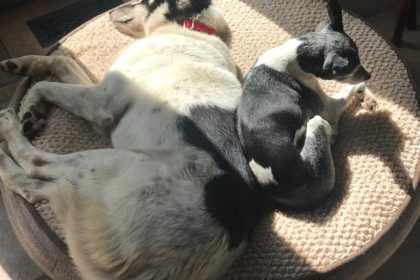



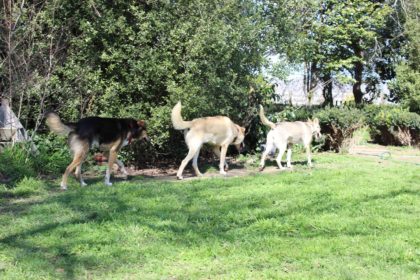
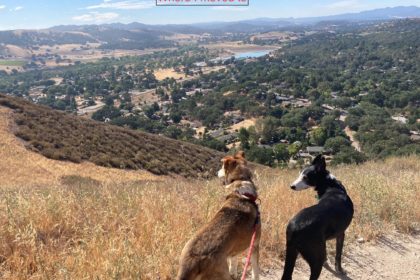
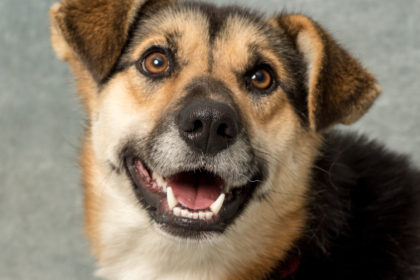
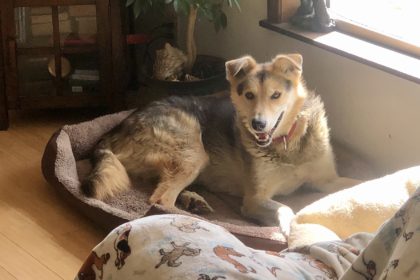
Fascinating – and a little scary. I am identifying with your fatigue and the frustration it promotes with respect to our decisions.
I was surprised about your comments regarding longer runs vs speed and rests. I didn't think about the fact that checking GPS speeds randomly and the MPH posted between checkpoints would distort my perception of actual speeds.
Can't wait for the next installment – but then there won't be anything until racing season. I am almost looking forward to snow and cold – almost.
Linda
Aliy, I sooo enjoyed reading this – I am looking out for more, and will be watching for you in 2010. Thanks for sharing this Regards, Terry
Regards, Terry
Perfect reading to cool me down on a very hot night here in the midwest!!
Reads like a best seller, Aliy, so detailed and insightful… always love your trail notes, thank you.
Finally we know what happened to Cha Cha!